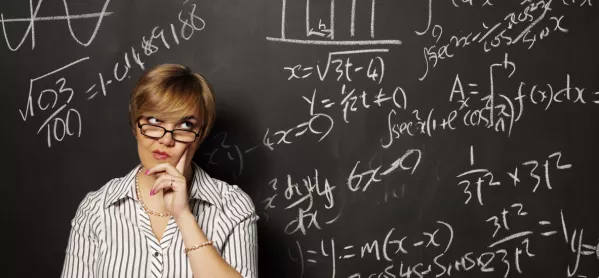- Home
- Teacher numbers rise overall but fall in 13 councils
Teacher numbers rise overall but fall in 13 councils

The Scottish government has a deal with councils that overall they must maintain teacher numbers, and this year they succeeded with an extra 288 teachers recorded as working in Scottish councils - although nurseries saw another drop in teacher numbers.
Overall this year, Scottish councils employed 52,247 teachers compared with 51,959 in 2018, according to figures published this morning.
Crucially, the pupil-teacher ratio of 13.6 was also maintained this year - it has remained the same as last year and the year before, 2017. In 2013 the pupil-teacher ratio was 13.5.
Teacher workforce: What’s happening to teacher numbers in Scotland?
Quick read: Progress on nursery hours, but staffing ‘crisis’ looms
Additional support needs: Education secretary criticised over ASN funding
However, the Summary Statistics for Schools in Scotland report also shows that in over a third of Scottish councils - 13 out of 32 authorities - teacher numbers actually fell.
There was also concern from an organisation that advocates on behalf of children with additional support needs (ASN), the Scottish Children’s Services Coalition, that once again the number of children with an identified ASN had risen - against a backdrop of a fall in specialist teacher numbers.
According to these latest figures, the number of pupils with an ASN is now over 200,000 - or 30.9 per cent of pupils. Last year there were 199,065 pupils with an ASN recorded, 28.7 per cent of all pupils.
‘Lack of specialist support’ for ASN pupils
A spokesperson for the coalition said: “While we are committed to the principle of inclusive education, and to the policy of educating young people with ASN in mainstream classes where this is the most appropriate environment for their learning, we have major concerns over a lack of resources and specialist staff to support these children and young people. This clearly has an impact not only on the individuals concerned but also on their peers and teachers.”
Overall, the local authorities that saw the largest drops in teacher numbers were Highland and the Western Isles, where the number of teachers fell by 4 per cent.
There were 88 fewer teachers in Highland this year as compared to last, and 14 fewer teachers in the Western Isles.
In both authorities the pupil-teacher ratio rose as a result, in Highland from 12.9 last year to 13.5 this year, and in the Western Isles from 10.2 last year to 10.6 this year.
However, the authority with the largest rise in the pupil-teacher ratio since 2013 was Dundee City Council. Teacher numbers there have dropped by 77 since 2013, with the pupil-teacher ratio going from 12.6 in 2013 to 13.9 this year. Last year the pupil-teacher ratio in Dundee was 13.8.
This year the authority with the highest pupil-teacher ratio was East Lothian - it has 15.1 pupils to every teacher. And although Edinburgh experienced one of the highest rises in teacher numbers this year - it employed an additional 106 teachers, according to the census - its pupil-teacher ratio was one of the highest at 14.9 pupils to every teacher.
Speaking at St Peter’s Primary in Edinburgh, education secretary John Swinney said he was “delighted” to see teacher numbers rising. He said that the overall level was at its highest in a decade, with the number of primary teachers at its highest since 1980.
“These latest statistics demonstrate that our reforms are working and education in Scotland is moving in the right direction,” he said.
There are now 798 teachers working in nurseries, down from 821 last year and 1,288 in 2013.
Register with Tes and you can read two free articles every month plus you'll have access to our range of award-winning newsletters.
Keep reading with our special offer!
You’ve reached your limit of free articles this month.
- Unlimited access to all Tes magazine content
- Save your favourite articles and gift them to your colleagues
- Exclusive subscriber-only stories
- Over 200,000 archived articles
- Unlimited access to all Tes magazine content
- Save your favourite articles and gift them to your colleagues
- Exclusive subscriber-only stories
- Over 200,000 archived articles



